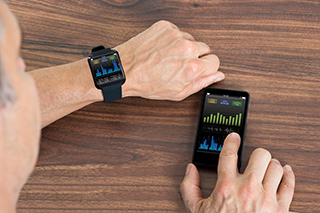Stay Fit, Stay Healthy
Regular physical activity is one of the most important things people can do to improve their health. Moving more and sitting less have tremendous benefits for everyone, regardless of age, sex, race, ethnicity, or current fitness level. Individuals with a chronic disease or a disability benefit from regular physical activity. Those who participate in fitness activities, no matter how small see improvements almost immediately.
The Center for Disease Control’s Second Edition of The Physical Activity Guidelines for Americans recommends 150 minutes of moderate physical activity per week or 75 minutes of high intensity physical activity per week. If that seems too daunting, start with a 10-minute walk each day, increasing your daily walk time by five minutes until you reach your goal.
Are stiff, achy joints hindering you from activities of daily living, or a walk around the block? If so, consider participating in Walk With Ease, a program designed to help people with arthritis increase physical activity without increasing pain.
Be sure to check with your physician before starting any exercise program.
Calculating Activity Intensity
- Subtract your age from 220. This is a rough calculation of your maximum heart rate.
- Determine the lower end of your target heart rate by multiplying your maximum heart rate by 0.7.
- Determine the upper end of your target heart rate by multiplying your maximum heart rate by 0.85.
Activity and Fitness Trackers
 If you want to monitor or record your daily physical activity, consider a fitness or activity tracker, a wearable device that tracks fitness-related metrics such as walking or running, calorie consumption, heartbeat and even quality of sleep. The device may be synched with a computer or smartphone to use for long-term data tracking.
If you want to monitor or record your daily physical activity, consider a fitness or activity tracker, a wearable device that tracks fitness-related metrics such as walking or running, calorie consumption, heartbeat and even quality of sleep. The device may be synched with a computer or smartphone to use for long-term data tracking.
Tracker facts
- There are approximately 2,000 steps in 1 mile
- 10,000 steps is approximately 5 miles
- Walking 10,000 steps per day will burn approximately 350 to 600 calories depending on the terrain, speed of the walk, and your current weight.
Maintaining Muscle Strength
We lose approximately one pound of muscle tissue per year after age 30 so it's important to maintain as much muscle mass as possible. Muscle tissue gives us strength to perform physical tasks and increases our metabolism. Some ways to maintain muscle strength include:
- Two or three sessions of muscle building activities - yoga; strength training at the gym or at home using machines or free weights; calisthenics/body work exercises such as push-ups, sit-ups and squats.
- Eating lean sources of protein for muscle building and repair.
Flexibility Exercises

Having the ability to move our body parts through a full range of motion is important for joint health and to be able to perform activities of daily living. Simple stretching exercises can help you maintain flexibility. The American Council on Exercise offers some suggestions for flexibility exercises if you need help getting started.
Physical Activity Guidelines
The Physical Activity Guidelines for Americans provides guidance on the amounts and types of physical activity necessary to maintain and improve overall health and reduce the risk of chronic disease.
